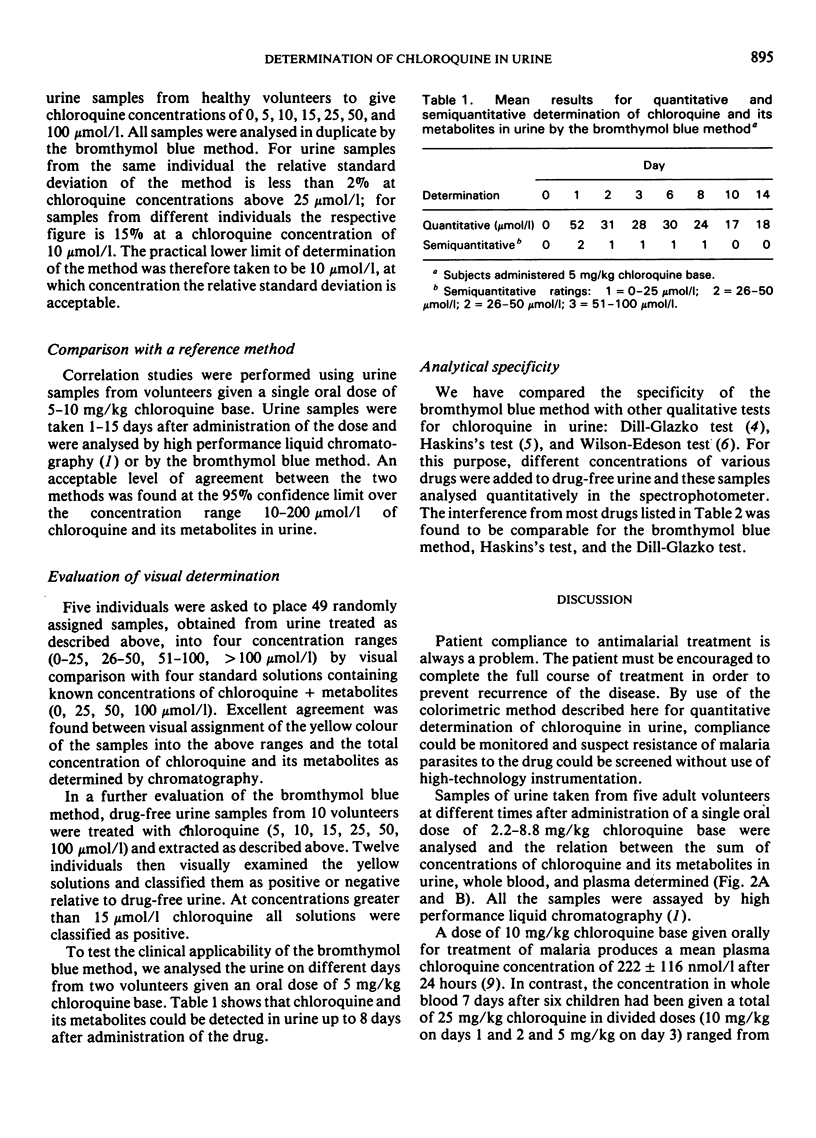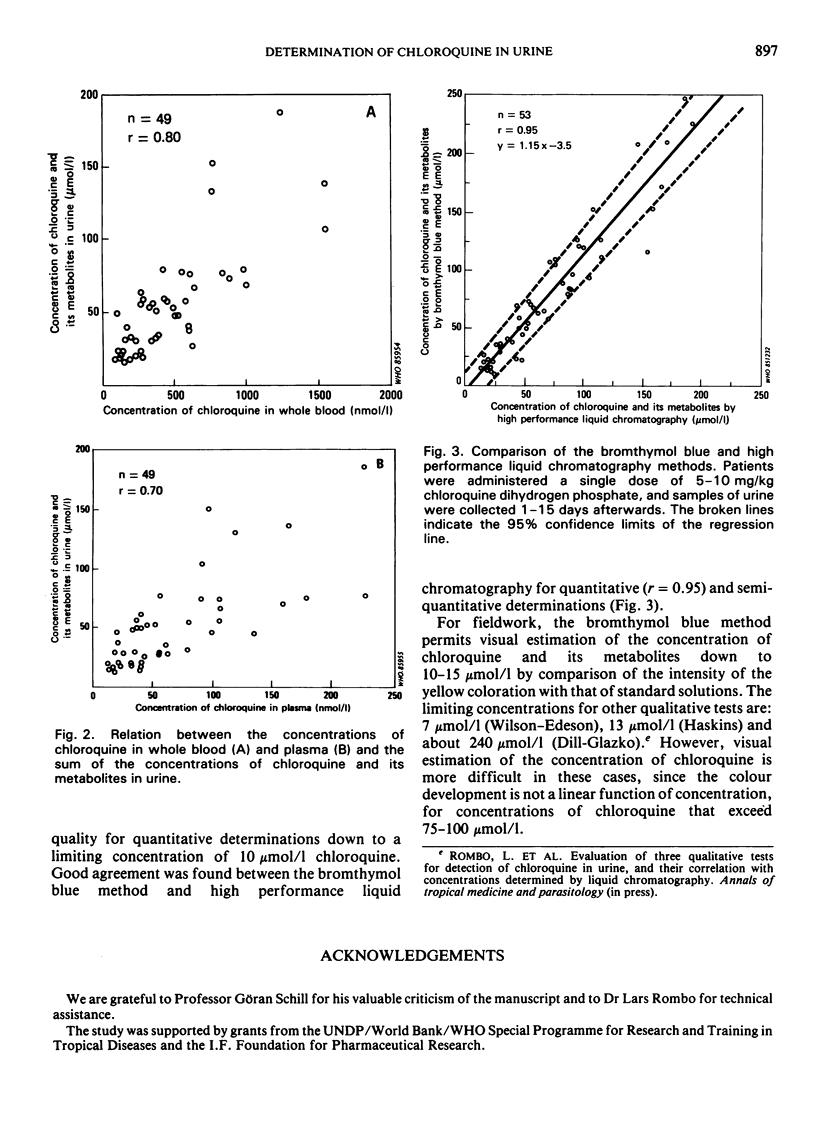Abstract
A new straightforward photometric method for the assay of the antimalarial drug chloroquine and its metabolites in urine is described. The method involves an ion-pair extraction procedure with dichloromethane using the acid-base indicator bromthymol blue as counter-ion. The ion pair formed with chloroquine in the organic phase is yellow, and absorbance is measured at λ = 410 nm using a filter photometer. The absorbance is a linear function of concentration up to 400 μmol/l (120 mg/l) chloroquine. The method is suitable for the determination of chloroquine and its metabolites in urine down to a limiting concentration of about 10 μmol/l (3 mg/l). Additionally, the method is suitable for semiquantitative visual estimation of the concentration of chloroquine in urine. A single dose of 5 mg/kg chloroquine base could be determined in urine from two volunteers for at least 8 days after administration of the drug. The results obtained for the analysis of chloroquine and its metabolites with the colorimetric method described here correlate well with those obtained using high performance liquid chromatography.
Full text
PDF





Selected References
These references are in PubMed. This may not be the complete list of references from this article.
- Bergqvist Y., Eckerbom S. An improved gas chromatographic method for the simultaneous determination of chloroquine and two metabolites using capillary columns. J Chromatogr. 1984 Mar 9;306:147–153. doi: 10.1016/s0378-4347(00)80877-4. [DOI] [PubMed] [Google Scholar]
- Bergqvist Y., Frisk-Holmberg M. Sensitive method for the determination of chloroquine and its metabolite desethyl-chloroquine in human plasma and urine by high-performance liquid chromatography. J Chromatogr. 1980 Nov 14;221(1):119–127. doi: 10.1016/s0378-4347(00)81013-0. [DOI] [PubMed] [Google Scholar]
- Lelijveld J., Kortmann H. The eosin colour test of Dill and Glazko: a simple field test to detect chloroquine in urine. Bull World Health Organ. 1970;42(3):477–479. [PMC free article] [PubMed] [Google Scholar]
- SCHILL G. PHOTOMETRIC DETERMINATION OF AMINES AND QUATERNARY AMMONIUM COMPOUNDS WITH BROMOTHYMOL BLUE. 4. EXTRACTION CONSTANTS AND CALCULATION OF EXTRACTION CONDITIONS. Acta Pharm Suec. 1965 Feb;2:13–46. [PubMed] [Google Scholar]
- Schwartz I. K., Payne D., Campbell C. C., Khatib O. J. In-vivo and in-vitro assessment of chloroquine-resistant Plasmodium falciparum malaria in Zanzibar. Lancet. 1983 May 7;1(8332):1003–1005. doi: 10.1016/s0140-6736(83)92640-5. [DOI] [PubMed] [Google Scholar]
- WILSON T., EDESON J. F. Studies on the chemotherapy of malaria. III. The treatment of acute malaria with chloroquine. Med J Malaya. 1954 Dec;9(2):115–131. [PubMed] [Google Scholar]
- Walker O., Dawodu A. H., Adeyokunnu A. A., Salako L. A., Alvan G. Plasma chloroquine and desethylchloroquine concentrations in children during and after chloroquine treatment for malaria. Br J Clin Pharmacol. 1983 Dec;16(6):701–705. doi: 10.1111/j.1365-2125.1983.tb02244.x. [DOI] [PMC free article] [PubMed] [Google Scholar]


